How To Play Baccarat: All You Need To Know
From its iconic presence in James Bond movies to its widespread availability in land-based and online casinos, Baccarat has quickly become a favorite among Players of all experience levels.
The combination of favorable odds, simplicity, and potential for substantial winnings has contributed to the enduring popularity of Baccarat.
Dive into the world of Baccarat and explore the needed information in this section to learn how to play the game.
🏆 Top Baccarat Gambling Sites
- VegasAces (💸 $5000 Welcome Bonus)
- Wild Casino (🎉 250% Welcome Bonus)
- Super Slots (💸 $6,000 Deposit Bonus)
Highlights of the Article
- The game involves three factors: the Player, the Banker, and the Counts.
- Baccarat has a distinct counting system, unlike regular card games.
- A typical Baccarat table in brick-and-mortar casinos can accommodate up to 14 Players.
- The Dealer takes a 5% commission on winning Banker’s hand bets, tracked separately.
- The house edge in Baccarat is 1.06% for the Banker’s hand, giving Players a slight advantage.
- The Banker’s hand wins more often (45.8%) than the Player’s hand (44.6%), with ties occurring 9.6% of the time.
- Betting on a Tie might not be the most advantageous choice for Players.
- Punto Banco is the easiest version of Baccarat played in casinos and is available for online play in some US states.
- The Labouchere system is a betting strategy that adjusts bets based on wins and losses.
The Art of Baccarat: An In-Depth Guide

Baccarat is one of the best games in a casino. It’s a game that exhibits a unique blend of simplicity and complexity, making it intriguing to new and seasoned Players.
The game revolves around three factors: the Player, the Banker, and the Counts:
The Player
The Player is one of the two main parties in the game, and Players at the table can bet on this hand.
The “Player” hand is not associated with the actual Players participating in the game; it’s just one of the two possible outcomes to bet on.
The Dealer deals a set of cards to the Player’s hand, determining its total point value by adding the individual card values.
For Example:
- If the Player receives a 5 and a 7, you add the values together (5 + 7 = 12), but since it’s over 9, you only count the last digit, which is 2. So, the Player’s count is 2.
The Banker
The Banker is the other main party in the game, and Players can also bet on this hand.
Like the Player’s hand, the “Banker” hand is also bet upon. The Dealer deals cards to the Banker’s hand and calculates their total value, just like the Player’s hand.
For Example:
- If the Banker gets a 3 and a 9, you add the values (3 + 9 = 12), and again, you only take the last digit, which is 2. So, the Banker’s count is also 2.
The Counts
Baccarat employs a unique counting system to determine the value of each hand, which differs from ordinary card games.
The objective is to have a hand total as close to 9 as possible, with the second digit of the sum being the final point count.
Did You Know?
Card counting is a form of gambling cheating because it disrupts the casino’s profit. Legal actions include calling authorities and charging them with trespassing or fraud.
This article explains why card counting is banned in most casinos.
Baccarat 101: Terminologies
This glossary includes specialized Baccarat terms, helping beginners understand the language experienced Players use for betting and discussing the game’s features.
- Baccarat – It’s a card game where Players place bets on whether the hand of the Player or the Banker will have a total closest to 9.
- Banco – Refers to the Banker’s hand, one of the two betting options available to Players, aiming to have a higher point total than the Player’s.
- Banker Bet – Players place a wager on the Banker’s hand, betting on it to win the round due to its slightly higher odds of winning.
- Banque – A popular European variation of Baccarat involving two Players, along with the Banker, playing on two interconnected tables.
- Caller – Responsible for directing the game, announcing the cards, and managing the Baccarat gameplay.
- Carte – It refers to the Player’s request for an additional card after the initial two-card deal.
- Chemin De Fer – A traditional variant of Baccarat where Players take turns being the Banker, and their decisions impact the game’s outcome, making the gameplay interactive.
- Commission – A small percentage of the casino’s winnings as a fee when Players bet on the Banker’s hand and win.
- Coup – Players lay their cards and place their bets in a single round or hand, and the winner is determined based on the point totals.
- Cut – After shuffling the deck of cards, the cut card is placed by the Player to the right of the Dealer to indicate where the Dealer should begin dealing.
- Dealer – A staff member handles the card distribution, ensuring fair play during Baccarat sessions.
- Discard Tray – A tray on the Baccarat table where used cards are placed after a hand, allowing Players to see previously dealt cards but not use them.
- Down Card/Hole Card – The Dealer gives the Player and Banker a face-down card, which remains hidden until the end of the hand when the Dealer reveals its value.
- Dragon Bonus – It’s a type of side bet in Baccarat that rewards you when your hand wins naturally or by a significant margin.
- Face Cards – The Jack, Queen, and King in Baccarat are all worth zero points.
- Flat Bet – Placing a consistent wager on the same outcome in Baccarat, typically without changing the bet amount throughout the game.
- Hit – Requesting an additional card in Baccarat after the initial deal, also known as “drawing” a card.
- Ladder Man – A casino supervisor who oversees the Baccarat table and ensures fair play.
- La Grande – A natural Baccarat hand totaling 9 points.
- La Petite – A natural Baccarat hand totaling 8 points.
- Mini Baccarat – It is a smaller-scale and faster-paced version of Baccarat typically played on a smaller table.
- Monkey – Slang for a face card or a ten in Baccarat, worth zero points.
- Natural – A two-card hand totaling 8 or 9 points in Baccarat, resulting in an automatic win for the Player or Banker without drawing any additional cards.
- Palette – A long, flat wooden tool used by the casino Dealer in Baccarat to move cards on the table.
- Player – One of the two betting options in Baccarat, where Players wager on the Player’s hand to have a higher point total than the Banker’s hand.
- Punto – The Italian term “Player” is often used in some regions to refer to the betting option on the Player’s hand in Baccarat.
- Push – A tie or draw between the Player and Banker’s hands in Baccarat resulted in no win or loss, and Players were getting their bets back.
- Run – A series of consecutive wins or losses for the Player or Banker’s hand in Baccarat.
- Shills – Casino employees or accomplices who pretend to be Players create the appearance of a busy table in Baccarat and entice other Players to join.
- Shoe – A device used in Baccarat to hold multiple decks of cards and facilitate smooth dealing throughout the game.
- Shooter – A term occasionally used in Baccarat to refer to the Player currently dealing with the cards.
- Standoff – Another term for a tie in Baccarat, where neither the Player nor the Banker wins, resulting in a push.
- Super Pan Nine – The objective of this Baccarat variant is to achieve a hand total of as close to 9 as possible, with some modified rules.
- Tie – A situation in Baccarat where the Player and Banker’s hands have the same point total, resulting in a push, and Players get their bets back.
Helpful Articles
Check out this article to find out the world’s largest casino that offers Baccarat.
Discover some interesting facts about these casinos, which have flourished over the years.
Breaking Down The Game of Baccarat
Alt tag: People playing Baccarat
By comprehending these fundamental components and their respective rules, players can better understand how the game unfolds and make likely decisions during gameplay.
The Player
Players bet on either the Player’s hand, the Banker’s hand, or a Tie.
A standard Baccarat table can accommodate up to 14 Players in traditional brick-and-mortar casinos, depending on the casino.
The Dealer/Banker
To commence the game, the Dealer takes center stage at the Baccarat table, efficiently dealing cards to reach every Player.
The Betting Area
Players will discover three-bet boxes on the felt table top—Player, Banker, and Tie.
Correspondingly placed to each Player’s position, allowing them to place their bets accordingly.
The Table
Baccarat tables typically have a semi-circular shape, allowing multiple players to participate.
The table layout comprises markings for the different betting areas and designated spots for the Dealer and shoe where the cards are.
The Betting Area
The Dealer collects a 5% commission on winning Banker’s hand bets, tracked in a designated area next to each Player’s bet.
The numbers in the box represent Players who owe commission, and the Dealer marks it until the Player settles the payment and leaves the table.
Baccarat’s Simple Math
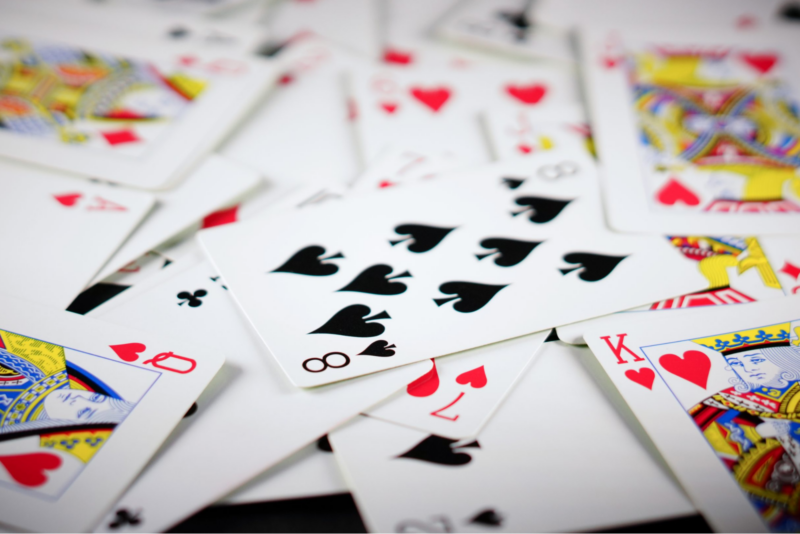
Using a strategic plan in Baccarat can increase a Player’s winning odds. These strategies are based on mathematical equations that help determine which hand is more likely to win.
To better understand Baccarat, it’s important to analyze its core components, such as the hands of the Player and Banker, and the distinctive system for calculating hand values.
Baccarat Card Values
In Baccarat, hand valuations rely on a straightforward, standardized system based on individual card values.
Each card carries a specific value, contributing to the total hand value. The breakdown of card values is as follows:
- Cards from 2 to 9: These cards hold and are worth their face value
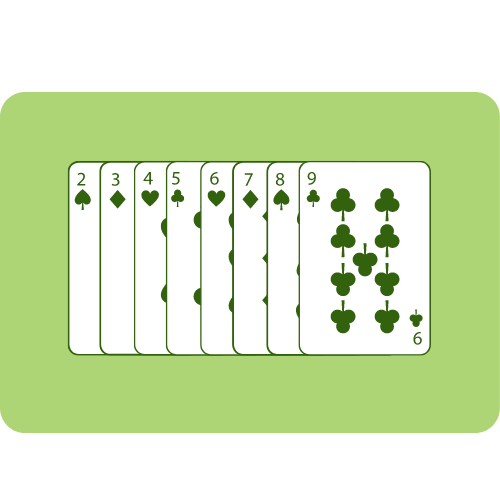
- Face cards (King, Queen, Jack) and 10s hold no numerical value during gameplay and have zero value.
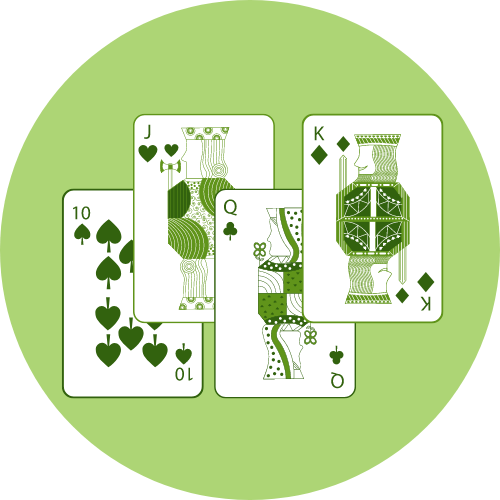
- Aces: Aces carry a value of one. They are considered the lowest-valued cards in Baccarat.
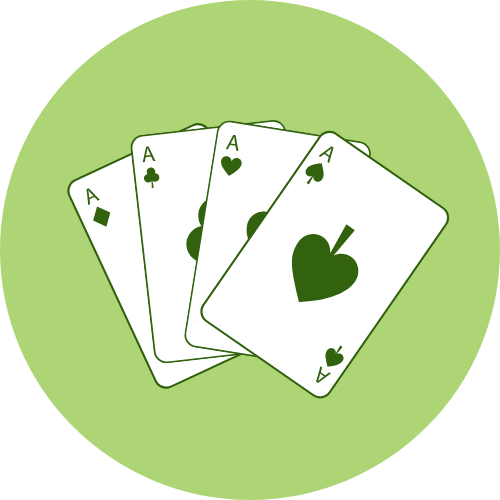
Adding Up Points
The individual cards are added to each other to determine the hand value.
Once the points value reaches a double digit, the second digit will automatically become the hand’s value.
For instance, if a hand contains a six and a 7 (totaling 13), the hand value is determined to be 3 (the rightmost digit of the sum).
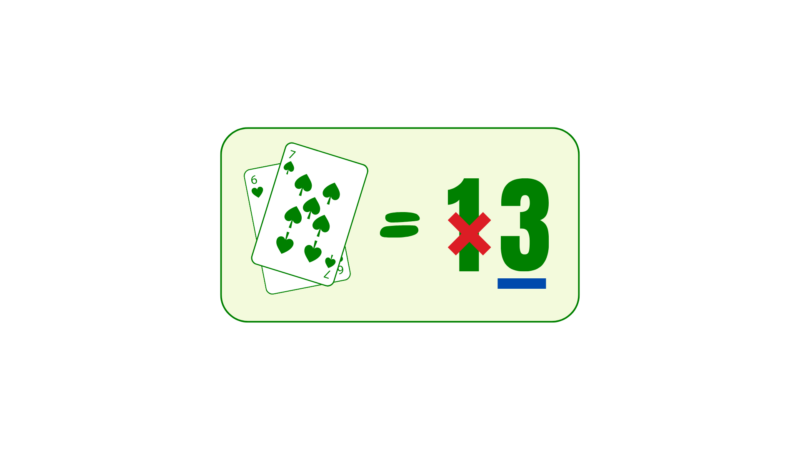
Getting to the Basics – Baccarat Mechanics and Rules
There are various strategies to achieve success in Baccarat, and having a clear understanding of the game’s rules and mechanics can help you alter the course of the game in your favor.
Explore the basics of the game to gain a solid understanding of its gameplay and principles.
A Step-by-Step Guide to Playing Baccarat
In Baccarat, the objective is to choose which hand, the Banker or the Player, will have a higher total value or if the result will be a tie.
The game follows these rules:
Bet can be placed on either of two hands
- In Baccarat, there are two hands – the Banker’s hand and the Player’s hand. Before dealing with the cards, Players must wager their bets on the Player or the Banker.
Cards are dealt
- The Dealer places a card face up in the Player’s box, followed by the first Banker card in the Banker’s box, and deals additional cards to complete the first round.
Total points of both sets of cards
- Tens and face cards have zero points, while other cards hold their face value, with aces worth one point.
The objective is to bet on the hand closest to a total of nine to win.
Understand the “natural” win
- If either the Player or the Banker receives a point total of 8 or 9 from the initial two cards dealt, it is known as a “natural” win, and the game concludes.
Bets placed are then settled and paid out.
Determine whether the player draws a third card
- If the Player’s starting total is 8 or 9, the Dealer does not draw any more cards. If the total is 6 or 7, the Player takes no more cards.
For totals of 0-5, the Player draws a third card, except when the Banker’s total is 8 or 9, resulting in an automatic win for the Banker without drawing any cards.
Calculating the winning hand
- In Baccarat, the winning hand is the one closest to a total of 9.
Either hand can win or lose in ties. Players may pay a commission from the winnings when betting on the Banker’s hand.
Helpful Articles
Out of hundreds of strategies to increase players’ winning odds, The Fibonacci strategy is a well-known betting system that is used by many.
It’s a mathematical series where every bet you put on the table is the sum of the two preceding numbers.
Discover more effective strategies to improve your winning odds in Baccarat by clicking this article.
Baccarat Odds and House Edge
Baccarat’s popularity stems from its exciting gameplay and rich cinematic history.
To arrive at the table with much confidence, it’s essential to understand how the house edge affects the game’s odds.
House Edge in Baccarat
- The house edge in Baccarat, standing at 1.06% on the Banker’s hand, provides Players with a lower advantage for the casino.
It offers one of the more favorable odds in brick-and-mortar and online casinos.
Odds of Baccarat Vs. Other Games
- Baccarat has a low house edge of 1.06% for the Banker’s hand and 1.24% for the Player’s hand, making it more Player-friendly than Roulette with its 5.26% house edge.
Compared to other casino games, Baccarat offers relatively good value, but it’s good to remember that the house always holds the advantage.
Odds of Players Vs. Banker Win
- When placing bets on the Banker’s hand, the house edge is 1.06%, whereas betting on the Player’s hand gives the casino a slightly higher edge of 1.24%.
- The Banker’s hand wins 45.8% of the time, slightly more than the Player’s hand at 44.6%, with ties occurring 9.6% of the time.
This means the Banker bet offers a better chance of winning than the Player bet.
When excluding ties, the Banker’s hand wins approximately 51% of the time, making it slightly better than coin-flip odds.
Since Baccarat remains a game of chance, predicting the winning hand is impossible.
Odds of a Tie
- Ties between the Banker’s and the Player’s hands occur only about 9.6% of the time. Despite the infrequent occurrence, the payout for a Tie bet is generous at 8 to 1.
However, the significant difference between the payout and the low odds results in an exceptionally high house edge of 14.36%.
As a result, betting on a Tie may not be the most advantageous choice for Players.
Did You know?
RTP, or “Return to Player,” is a significant factor in providing valuable information about the potential outcomes and fairness of a casino game like Baccarat.
Click this article to learn how to calculate the RTP for casino games.
“Zero”: The Story Behind Baccarat
Baccarat’s history traces back to medieval Italy over 500 years ago, initially reserved for the upper class and aristocrats.
Felix Falguiere, or Falguierein, is believed to have created the game in the 1400s and named it “baccara” due to the zero value of tens and face cards.
Originally, Baccarat had four Dealers, Players took turns as the Banker, and bets were against both Players and the house.
In modern Baccarat, there’s one Dealer, bets are mainly against the house, and the house serves as the Banker.
The Various Types of Baccarat
Baccarat has a long history as a classic casino game with several variants. Each version has rules and side bets, providing Players with more variety than expected.
Baccarat Banque
- This Baccarat variation, called Baccarat à deux tableaux, is occasionally available in European land-based casinos.
Before the game starts, the Players auction the Banker’s role to the Player with the highest bet.
In the Baccarat banque, Players have two hands and must choose which Player hand they believe will win since betting on the Banker’s hand is not allowed.
Punto Banco
- Punto Banco is the easiest version of Baccarat played in casinos today, which is legally available for online play in certain US states.
It is a popular game among Asian cultures, particularly favored by high rollers, with a streamlined process where decisions are fully automated.
Punto Banco is a two-Player game between the “Banker” and the “Player,” and the outcome relies on chance, offering Players limited options except for how much to bet and on which side.
Chemin de Fer
- Chemin de Fer has a more intricate betting process, allowing the bank to move between Players, and others take turns betting up to the bank’s total stake.
The game progresses slower than Punto Banco, as Players have more decision-making time, contributing to Punto Banco’s popularity in many locations.
Mini Baccarat
- Mini-Baccarat is similar to Punto Banco, as it follows the same rules, but the difference lies in having a single croupier.
Like Blackjack, Players are not allowed to touch the cards in this popular worldwide version, which offers easy strategies and low table limits, contributing to its popularity in the US and beyond.
Macao
- In this version, Players have more freedom to handle the cards, making them unique compared to other Baccarat variants.
Macau Baccarat maintains the goal of reaching a hand total closest to 9 but offers a more interactive gameplay experience to Players seeking a different playstyle.
Did You know?
Baccarat is a known casino game in Asia, particularly in Macau, where it generates the majority of casino revenue.
Keys To Victory–Baccarat Strategies
There are numerous strategic plans to beat the game of Baccarat; these plans include different tricks and methods to beat the luck factor of the game.
Mathematical equations help identify the hand with a higher probability of winning, forming the foundation of these strategies.
By understanding the game’s mechanics and strategies, Players can make good decisions, maximize their profitability, and have greater control over their outcomes.
Betting With the Banker
- Betting on the Banker is a well-known strategy due to its lower house edge, increasing the odds of winning.
The hand is even better than betting on the Player’s hand, as it has a smaller house edge of 1.06%, making it one of the best bets in the casino.
The said approach minimizes risk and offers more favorable long-term results.
The D’Alembert System
- Ties are uncommon in Baccarat, and placing a Tie bet has lower odds of winning than other betting options.
Smart Players avoid the Tie bet in Baccarat due to its high 14.1 percent edge in favor of the casino, instead opting for the two main bets with better advantages.
The D’Alembert betting system is a well-known and straightforward strategy in which Players adjust their bet size by one unit after every win or loss.
For example: An initial bet of $10 will increase to $20 for the next round after a win and it will increase to $30 for another win but will decrease by $10 from a loss, and so on.
This strategy aims to balance losses and wins over time.
The Paroli System
The Paroli strategy involves doubling the bet after each win, maximizing profits during winning streaks while managing risks effectively.
For example: The first bet of $10 will be doubled into $20 for the next round after a win and so on but a loss will go back to the original $10 bet.
Keep a Strict Bankroll
Managing a strict bankroll is crucial to ensure responsible gambling and avoid excessive losses.
It involves Players setting limits on the amount of money to be wagered, avoiding going “all-in,” and establishing win/loss limits to maintain control over the gaming experience.
To use this method, you must increase your bet by double the amount after each loss and then return to the original bet amount after a win.
For example: The initial bet of $10 will continue the same bet of $10 after a win, but a loss will double the bet to $20, and another loss will double it again to $40. A win in the next round will revert to the original $10 bet.
While it can be risky, it is a popular strategy for those seeking to recover losses quickly.
Don’t Get Caught Up in Patterns
Baccarat is a game of chance, and it is important not to fall into the trap of believing in patterns or streaks.
Each hand is independent, and past results do not guarantee future outcomes.
The Fibonacci Strategy
The Fibonacci betting system is a mathematical sequence where Players increase their bets according to the Fibonacci sequence.
For example: The Player starts with a $10 bet, and after each loss, they progress to the next number in a Fibonacci sequence for their subsequent bets and will return towards the start with a winning bet. (The sequence is $10, $10, $20, $30, $50, $80, $130, $210, $340, $550, $890, $1440, and can go as far as needed.)
This strategy provides a structured approach to betting while managing risks.
The Labouchere System
The Labouchere system creates a betting sequence and adjusts bets based on wins and losses until it reaches the target profit.
For example: To win a $40 target in Baccarat using the Labouchere system, divide it into a sequence in 6, 7, 8, 9, 10 and the first bet will be 6 + 10 = $16.
After each loss, add the amount lost to the end of the list: 6, 7, 8, 9, 10, 16 and the next bet would be 6 + 16 = $22. On each win, cross out the two numbers bet, the list would be 7, 8, 9 and the next bet would be 7 + 9 = $16 again.
Don’t Go “All-In”
It is essential to avoid risking the bankroll on a single bet, as it can lead to significant losses.
Responsible gambling involves maintaining discipline and making calculated bets within one’s financial means.
Wrapping Up
While luck is crucial in winning the game, this article emphasizes that by studying various strategies and approaches, Players can significantly improve their chances of defeating the game.
Players must understand the Dealer’s card dealing process, scoring system, and rules for drawing extra cards in order to make well-informed decisions while playing.
Remember that Baccarat is a game of fun and entertainment, so play with a positive mindset and enjoy the thrill of the game without undue pressure to win.
FAQs
What is the best strategy for Baccarat?
Players can adopt the Martingale system, where Players double their bet after a loss and reset it after a win, making it well-suited for even money payouts.
What makes Baccarat popular among rich Players?
Due to its minimal house edge, Baccarat attracts many high-stakes casino Players.
Are Baccarat odds better than blackjack odds?
When directly compared, Baccarat gambling generally offers better overall odds than Blackjack, with a difference of approximately 2%.
Is Baccarat a game of skill?
Baccarat is mostly a game that relies on luck, and Players have very little control over the results except for placing strategic bets.
 BC.Game
BC.Game  7Bit
7Bit  Ducky Luck
Ducky Luck  Red Dog
Red Dog